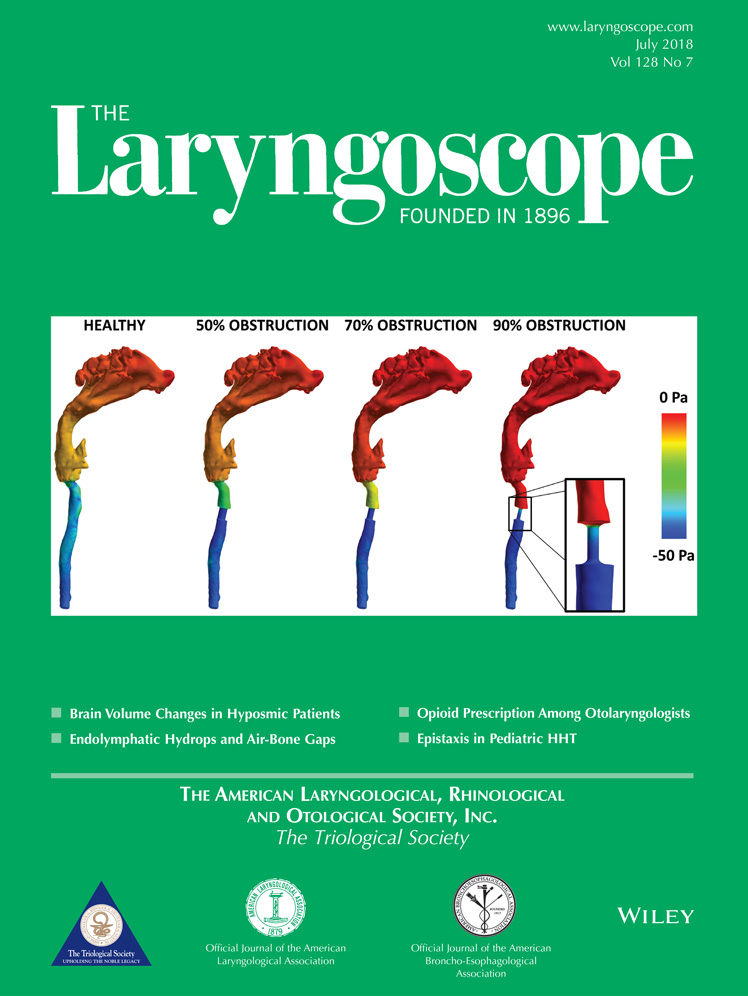Innervation status in chronic vocal fold paralysis and implications for laryngeal reinnervation
Presented as a podium presentation at the American Laryngological Association (ALA) at Combined Otolaryngology Spring Meetings (COSM), San Diego, California, U.S.A., April 26, 2017.
The authors have no funding, financial relationships, or conflicts of interest to disclose.
Abstract
Objective
Treatment options for symptomatic unilateral vocal fold paralysis (VFP) include vocal fold augmentation, laryngeal framework surgery, and laryngeal reinnervation. Laryngeal reinnervation (LR) has been suggested to provide “tone” to the paralyzed VF. This implies a loss of tone as a result of denervation without reinnervation. We performed laryngeal electromyography (LEMG) in patients with chronic VFP to understand the innervation status associated with a chronically paralyzed vocal fold.
Study Design
Retrospective review of LEMG data in adult patients with chronic VFP from January 2009 to December 2014.
Methods
LEMG was performed at least 6 months after-onset of VFP. Qualitative LEMG, quantitative LEMG, and adductory synkinesis testing were performed, and the parameters were collected.
Results
Twenty-seven vocal folds were studied (23 unilateral VFP and 2 bilateral VFP). Average age was 59 ± 17 years. The median duration from recurrent laryngeal nerve injury to LEMG was 8.5 months (range 6–90 months). The majority of patients, 24 of 27 (89%), had motor unit potentials during phonation tasks on LEMG, and only 3 of 27 (11%) patients were electrically silent. Quantitative LEMG showed 287.8 mean turns per second (normal ≥ 400). Motor unit configuration was normal in 12 of 27 (44%), polyphasic in 12 of 27 (44%), and absent in the electrically silent patients. Adductory synkinesis was found in 6 of 20 (30%) patients.
Conclusion
Chronic vocal fold paralysis is infrequently associated with absent motor-unit recruitment, indicating some degree of preserved innervation and/or reinnervation in these patients. LEMG should be part of the routine workup for chronic VFP prior to consideration of LR.
Level of Evidence
4. Laryngoscope, 128:1628–1633, 2018




